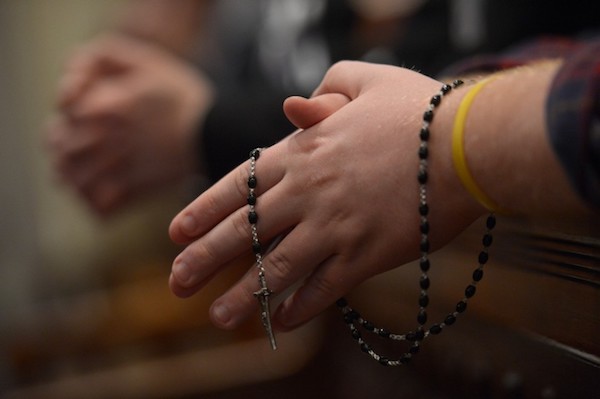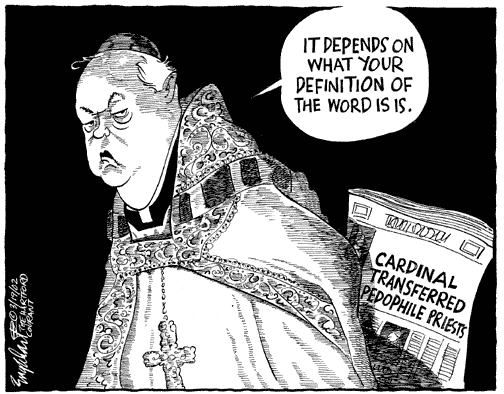
By Eve Tushnet
When I entered the Catholic Church in 1998, I had never met another gay person who accepted and intended to live out the Catholic sexual ethic in which sex is reserved for marriage between a man and a woman. I had never even heard of such a person. I didn’t care, since I was full of blithe 19-year-old overconfidence (“Seems like nobody’s done this before, but surely it will be a cinch for moi!”), but life without models and guidance proved lonely and confusing.
Since then the community of LGBT people seeking to live out the historical Christian sexual ethic has become far more vocal. There are a few small guidebooks: Wesley Hill’s “Spiritual Friendship: Finding Love in the Church as a Celibate Gay Christian,” Tim Otto’s “Oriented to Faith: Transforming the Conflict Over Gay Relationships” and my book “Gay and Catholic,” which suggest ways for gay people to lead lives of love in traditional churches.
I would love more books to add to this tiny shelf, especially a book in which LGBT people seeking to live within church teaching are considered part of both the global church and the LGBT community. Gay people who accept celibacy out of obedience to our churches face challenges common to all Christian disciples. We also face the all-too-common LGBT experiences of violence, discrimination and isolation. And we have the unique experience of trying to serve and love in churches that often seem embarrassed by our existence and silent about our futures. I’d love a book about the gifts LGBT people can bring to our churches, and the compassionate and creative guidance we need from those churches.
A new book by the Rev. James Martin, a Jesuit priest, called “Building a Bridge: How the Catholic Church and the LGBT Community Can Enter Into a Relationship of Respect, Compassion, and Sensitivity” is not the book I’ve longed for. It’s a slender book stitched together from a speech, Bible passages with questions for reflection, and a moving “Prayer When I Feel Rejected.”
Martin defines the church as “the institutional church — that is, the Vatican, the hierarchy, church officials, and the clergy.” He aims to persuade these priests and bishops to listen better to gay people and our families, and to persuade gay people to be more polite and thoughtful in our criticisms of mitered folk.
Martin was startled by many Catholic leaders’ response to the mass shooting at the Pulse nightclub in Orlando last year. Hearing church leaders deplore violence but refuse to acknowledge that the people targeted were gay, Martin called for a bridge between the two groups.
Martin calls on church leaders “to proclaim God’s love for a people who are often made to feel, whether by their families, neighbors, or religious leaders, as though they were damaged goods, unworthy of ministry, and even subhuman.” And he calls on LGBT people to give the Catholic hierarchy “simple human respect … in keeping with our Christian call,” instead of mockery.
Martin never hints that gay people exist who seek to live in obedience to the Catholic Church. Fair enough — not every book has to be for everybody, and people in my situation are a tiny minority. But we may be able to offer insights into areas this book carefully avoids.
For example, why is this conversation so hard in the first place? “Building a Bridge” doesn’t raise the question of why LGBT people and the Catholic Church so often seem like two separate, hostile camps. The Catholic sexual ethic is this book’s embarrassing secret. It’s never mentioned, and so the difficulties the teaching itself poses for gay Catholics in our culture are never addressed.
I’m deeply sympathetic to the attempt to have a conversation about gay people and the church that never mentions sex or chastity; too often even the most “respectful” statements from the Catholic Church hierarchy have a strong flavor of “Jesus loves you, but here’s how you’ve got to behave.” But I’m not sure it’s wise to write as if all the church is asking is for gay people simply to be nicer.
The church is not just a bunch of dudes in special clothes. If we picked our religion based on whose leaders were most personally trustworthy, nobody would be Catholic. But the Catholic Church is the bride of Christ — our mother, as terrible as an army with banners (Song of Songs 6:10) — and she asks a much higher “bridge toll” of everyone than this book admits.
The church asks more of her leaders than mere respect and sensitivity (although God knows that would be a good start). She asks of them repentance and amends for the ways in which they’ve made so many churches hostile to gay members, treating us as problems to be fixed or silenced.
And the church asks gay people to do our best to forgive. She asks us to have the courage to live out forgotten forms of Christian love, including same-sex love: devoted friendship, celibate partnership, intentional community and more.
In a culture where everything from pop songs to health insurance urges us to structure our lives around romance and marriage, gay Christians have a chance — or a duty — to show that you can make a life of devotion, joy and mutual sacrifice within celibacy. And straight Christians have a chance not only to live the models we’ve shown them, following the paths we’ve blazed, but to support us when our callings to nonmarital love leave us economically or emotionally vulnerable.
Scripture shows us the covenant friendship of David and Jonathan, the devoted kinship of Ruth and Naomi. Jesus, the God who is love, loved more deeply than any human being. Jesus’ celibacy helped us see what it means to dedicate your life to God and the people of God.
Martin writes eloquently of the gifts LGBT Christians can bring our churches. But aside from a vague reference to “social justice issues,” he doesn’t suggest that our church can guide and teach us. Martin has written well on celibacy for priests and others who have taken religious vows, as in his 2002 New York Times op-ed, “Choosing Celibacy.” I wish in his new book he had explored celibate witness more deeply, or reflected on scriptural models by which gay people could understand our longings for same-sex love and intimacy. If we are all the church together, LGBT laypeople who seek to live in obedience to the church have a place as well as those who dissent.
After the Pulse shooting, Washington area houses of worship held an interfaith vigil. The participants were of every sexual orientation and many beliefs; celibate gay people stood alongside those in same-sex marriages to mourn and pray. Sometimes it can be harder to come together in ordinary times than in the wake of crisis. But our challenge is to be honest about our beliefs — even the ones we find most challenging — while welcoming and cherishing those who disagree.
Still, Martin offers LGBT Catholics who accept our church’s teachings something we need desperately, in his use of Psalm 139, exploring how God knows us completely and loves us unshakably. No matter what we do or where we go, God is there with us. We are “fearfully and wonderfully made”: formed, from the very first moments of our lives, by God’s love.
Complete Article HERE!


